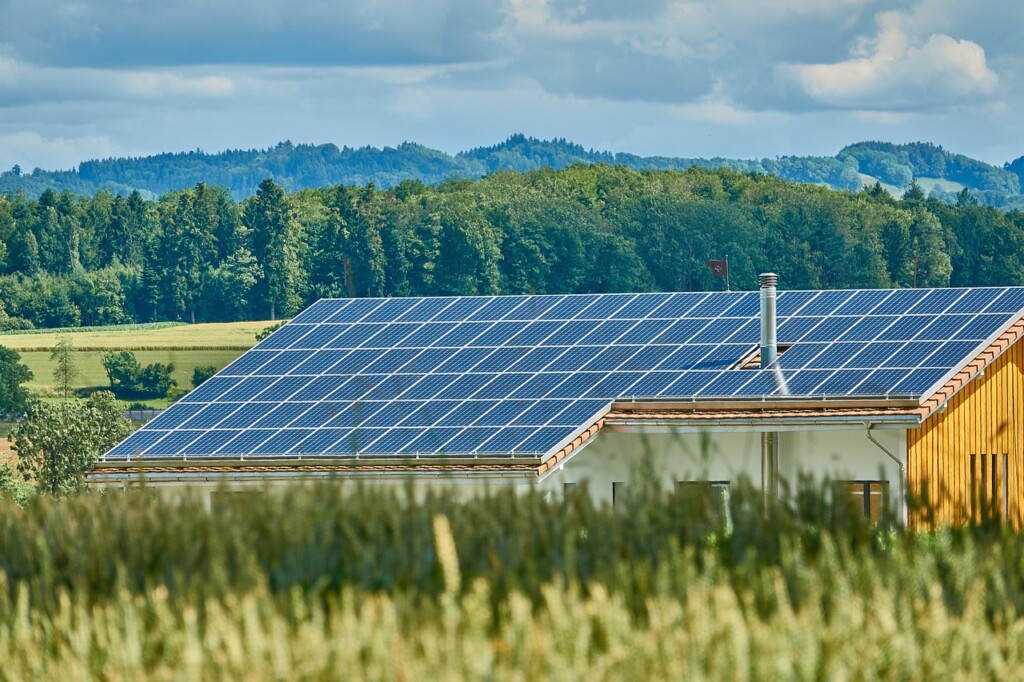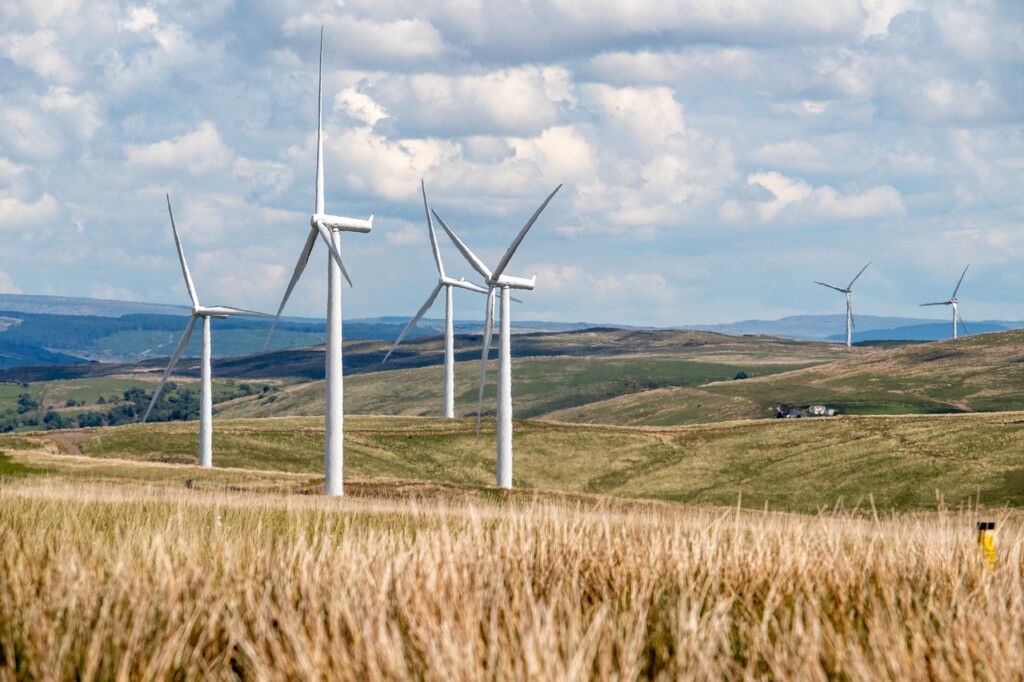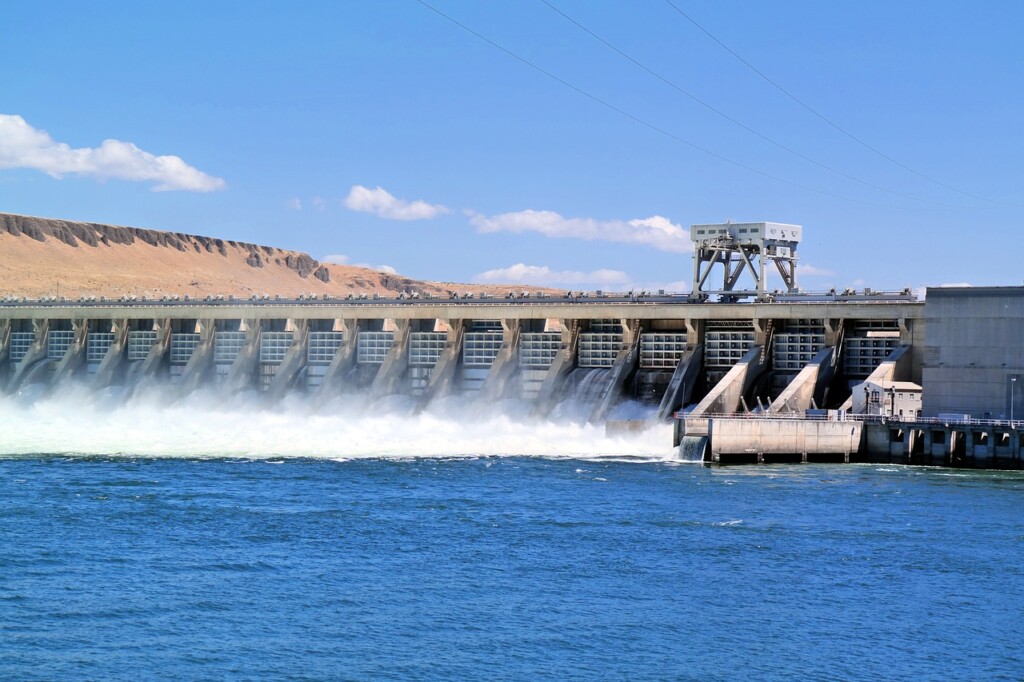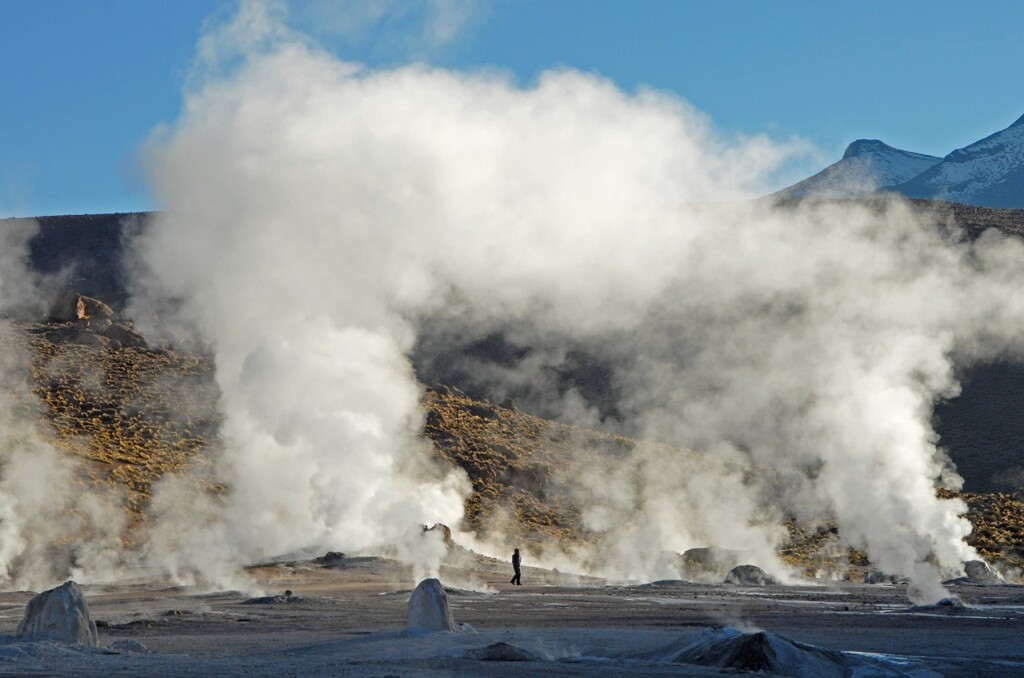Have you recently looked outside? Yikes. Our beloved planet is going through some difficult times. Temperatures are skyrocketing, wildfires are raging, and don’t even get me started on the erratic weather. Isn’t that enough to make you want to crawl back into bed and hide beneath the covers? But, my friends, there is hope, a light at the end of the tunnel, if you will. And that light is powered by renewable energy. But what is renewable energy? Today, we’ll look at just that, from what it is to how it works and why it’s so vital. But don’t worry, we won’t bore you with technical language or complicated notions. Let’s dive right in!
Renewable energy is a term that is frequently used these days, but what exactly does it mean? Simply said, renewable energy is energy derived from natural, replenishable resources that can be harvested without negatively impacting the environment. Solar, wind, hydro, geothermal, and biomass energy are all examples of renewable energy. Unlike finite fossil fuels that emit harmful emissions, renewable energy sources are clean, sustainable alternatives that are critical to the future of our world.
Global worries about climate change, resource scarcity, and energy security are driving an increase in interest in renewable energy. As the global population grows, so does the demand for energy. Renewable energy sources can supply this need while without depleting the Earth’s resources or contributing to damaging greenhouse gas emissions. We can lessen our dependence on fossil fuels and create a healthier, more sustainable environment for future generations by shifting to renewable energy.
Governments, businesses, and individuals all around the world are recognizing the value of renewable energy and investing in its development and implementation. Countries such as Germany, China, and the United States are at the forefront of renewable energy production, while smaller nations are also making significant achievements. As the world continues to embrace renewable energy, we will see even more advances and discoveries in this critical industry.
Renewable energy harnesses the power of natural resources and converts it into usable energy. Take, for example, solar energy. Solar panels capture sunlight and convert it to electricity, which may then be used to power your home or company. Photovoltaic (PV) cells, which are uniquely engineered to catch and convert sunlight into electricity, enable this conversion process. Solar energy is a clean, limitless resource that may be exploited on big and small dimensions, from utility-scale solar farms and solar pool heaters to residential rooftop solar panels.

Wind turbines, on the other hand, use the power of the wind to generate electricity. When the wind blows, the turbine’s blades rotate, spinning a generator that transforms the kinetic energy into electricity. Wind energy is a plentiful, clean resource that can be harnessed both on and offshore, making it a versatile and important renewable energy source.

Hydroelectric power generates electricity by capturing the energy of falling or flowing water, often by building a dam and reservoir to control the flow of water through a turbine. The rotation of the turbine generates electricity, which is then delivered via the power system. While hydroelectric power is a clean, dependable source of electricity, it is important to note that dam construction can have substantial environmental and social consequences, making it critical to thoroughly weigh the advantages and downsides of each project.

Geothermal energy is produced by capturing heat from the Earth’s core. This heat is produced naturally by the disintegration of radioactive materials within the Earth and can be accessible by drilling deep into the subsurface. Geothermal power plants employ the steam or hot water generated by the underground heat to power turbines, which generate electricity. Geothermal energy is a clean, dependable, and essentially limitless resource that may be used in a variety of ways, from large-scale power plants to small-scale heating and cooling systems.

Finally, biomass energy is produced by the combustion of organic stuff such as wood, crop waste, or even garbage. When these materials are burned, they emit heat that can be used to generate steam and power. Biomass energy is considered renewable since it is based on materials that can be regrown or replenished, but it is critical to ensure that the biomass is sourced sustainably to avoid negative environmental consequences such as deforestation or increased greenhouse gas emissions.
Renewable energy is vital for a variety of reasons, the most pressing of which being the need to lessen our carbon footprint. One of the fundamental causes of climate change is the use of fossil fuels for energy, and the consequences of our reliance on nonrenewable resources are becoming increasingly obvious. Renewable energy sources, on the other hand, emit little to no greenhouse gasses and have a significantly lower environmental impact.

We can assist to alleviate the negative effects of climate change by adopting renewable energy, such as rising sea levels, extreme weather events, and threats to biodiversity. Furthermore, renewable energy can aid in the reduction of air pollution, a major public health concern, particularly in heavily populated urban areas. We can enhance air quality, minimize respiratory ailments, and promote healthier, more sustainable communities by shifting to cleaner energy sources.
Another critical factor for renewable energy’s relevance is energy security. As global energy consumption rises, competition for finite resources such as oil and gas heats up, potentially leading to geopolitical conflicts and price volatility. Countries can lessen their reliance on imported fossil fuels by investing in renewable energy, resulting in a more stable, self-sufficient energy supply. This not only improves national security but also economic growth by generating new employment and companies associated with renewable energy development.
Aside from the obvious environmental advantages, renewable energy has a variety of other advantages. For one thing, it has the potential to lessen our reliance on foreign oil and other nonrenewable resources. Countries can increase their energy independence and insulate themselves against volatility in the global energy market by developing indigenous renewable energy resources.
Furthermore, because they are not subject to the same price volatility and supply chain interruptions as traditional energy sources, renewable energy sources can be more stable and resilient. For example, renewable energy systems may frequently continue to operate through natural disasters or periods of high demand, maintaining a steady supply of electricity for homes and businesses.
Another key advantage of renewable energy is the possibility for economic growth and job creation. Manufacturing, installation, maintenance, and research and development employment are being created as the renewable energy sector increases. This growth not only benefits the economy, but it also allows individuals to learn new skills and find stable, well-paying positions in an industry with a bright future.
Renewable energy has a bright future, with more and more countries and businesses pledging to investing in clean, green energy. As technology advances and the cost of renewable energy falls, we may expect to see even more developments in the field of renewable energy in the coming years. Some experts anticipate that renewable energy will one day power the entire world, resulting in a truly sustainable future for future generations.
Renewable energy technology innovations, such as improved energy storage systems, more efficient solar panels, and advanced wind turbine designs, will propel the sector forward, making renewable energy more accessible and cheap to all. Furthermore, as public understanding of renewable energy’s environmental and economic benefits develops, so will support for policies and programs that promote its adoption and development.
Integration of smart grid technology and distributed energy resources, such as rooftop solar panels and small-scale wind turbines, will be critical in the future of renewable energy. These decentralized solutions have the potential to increase the overall dependability and resilience of the energy grid while also empowering individuals and communities to take more control of their energy production and use.
Another exciting aspect in the future of renewable energy is the possibility of new, innovative clean power sources. Tidal and wave energy technologies, for example, are still in their infancy, but they hold great potential for harnessing the power of the ocean to generate electricity. Researchers are also investigating the possibilities of fusion energy, which, if produced successfully, might provide a near-limitless supply of clean power.

Renewable energy is not only good for the environment and climate change mitigation, but it also provides enormous prospects for job development and economic progress. As the demand for clean, sustainable energy sources grows, so does the demand for qualified personnel in renewable energy industries such as solar, wind, hydro, geothermal, and biomass.
The installation, operation, and maintenance of renewable energy systems is a major driver of job growth in the renewable energy sector. Solar panel installers, wind turbine technicians, and hydropower plant operators, for example, are all critical to ensuring that these systems operate properly and effectively. Engineers, researchers, and factory employees are also employed in the design and manufacture of renewable energy technology.
In addition to direct work possibilities in the renewable energy sector, indirect and induced job opportunities are created through the supply chain and related services. Renewable energy projects, for example, boost the construction and transportation industries by providing the resources and infrastructure required to create and support renewable energy installations.
Furthermore, the renewable energy sector can boost economic growth by encouraging innovation and attracting investments. As more corporations and governments understand the potential of renewable energy, they are more likely to engage in the research and development of new technologies, opening up chances for entrepreneurs and startups to bring game-changing solutions to market.
While the terms “renewable energy” and “green energy” are sometimes used interchangeably, understanding the significant nuances between the two ideas is critical. Both refer to the generation of energy from ecologically favorable sources, but the differences are in how the energy is produced and its total environmental impact.
As previously stated, renewable energy is energy created from natural, replenishable resources such as sunshine, wind, water, geothermal heat, and biomass. These sources are considered renewable because, unlike fossil fuels, they are continuously replenished and will not deplete over time. However, the process of extracting and turning these resources into usable energy may have certain environmental consequences, such as the consumption of water in certain hydropower facilities or the production of some greenhouse gasses during biomass combustion.
Green energy, on the other hand, refers to energy created from sources and procedures that have little to no detrimental influence on the environment. Green energy is always renewable; however, not all renewable energy is green. Solar and wind energy, for example, are frequently regarded as green since they generate electricity without producing greenhouse gasses or inflicting major environmental damage. While large-scale hydropower is renewable, it may not necessarily be considered green due to the possible impact on ecosystems and the relocation of local residents during dam and reservoir building.
When evaluating the move to greener energy sources, it’s critical to understand these distinctions and emphasize both renewable and green energy solutions. We may work toward a more sustainable and eco-friendly future by focusing on the development and use of renewable energy sources with low environmental impact.
As renewable energy sources become more widely used, the role of energy storage devices in ensuring the reliability and stability of the power grid becomes increasingly important. Energy storage is critical in resolving the inherent intermittency and variability of renewable energy sources such as solar and wind power, and it aids in the maintenance of a stable and continuous supply of electricity.
Batteries, pumped hydro storage, compressed air energy storage, flywheels, and thermal storage systems are all examples of energy storage technology. These technologies are intended to store extra energy produced during periods of high production (for example, when the sun shines or the wind blows) and release it during periods of low production or high demand.
Battery energy storage systems, particularly lithium-ion batteries, are one of the most promising and quickly evolving energy storage technologies. These batteries can store enormous amounts of energy and respond swiftly to changes in electricity supply and demand. Furthermore, advances in battery technology have resulted in significant cost reductions, making them a more realistic option for renewable energy integration.
Integrating energy storage systems with renewable energy installations not only ensures a consistent and reliable electricity supply, but also allows for higher penetration of renewable energy sources into the grid. This growing penetration may result in less reliance on fossil fuels, lower greenhouse gas emissions, and a more sustainable energy future.
While the benefits of renewable energy are obvious, and technologies continue to progress, there are various problems and obstacles that are impeding global adoption of 100% renewable energy. Addressing these issues is critical for hastening the worldwide transition to a sustainable energy future.
Identifying and overcoming these problems and roadblocks will be essential in hastening the worldwide transition to 100% renewable energy. We can pave the path for a cleaner, more sustainable, and secure energy future by investing in research and development, enacting supportive legislation, and increasing public knowledge and acceptance.
Renewable energy is the bright light at the end of the tunnel, pointing the way to a more sustainable, environmentally responsible future. We can lessen our reliance on fossil fuels, prevent climate change, and build a healthier planet for ourselves and future generations if we continue to innovate and invest in renewable energy solutions. By embracing renewable energy, we can not only safeguard the environment but also create new chances for economic growth and employment creation, making it a win-win situation for all parties concerned.
Nuclear energy is not considered a renewable energy source because its fuel is derived from finite resources such as uranium. However, it is sometimes argued whether nuclear energy should be termed green because it emits far fewer greenhouse gases than fossil fuels. The risks involved with nuclear accidents and the management of radioactive waste are the key issues about nuclear energy as a green source.
Communities and local governments may help expedite the transition to renewable energy by setting strong renewable energy goals, passing supportive legislation, and developing public-private partnerships to build renewable energy projects. They can also encourage energy conservation measures, invest in local renewable energy infrastructure, and educate the public on the benefits of renewable energy.
Stay a while and read more posts like this
Imagine a source of energy that’s efficient, renewable, and capable of reducing our reliance on fossil fuels. Picture a world where the heat residing beneath...
Renewable energy, often referred to as alternative energy, is derived from natural resources or processes that continuously renew themselves. This includes naturally...
Green Energy, Green Living, Renewable Energy
Ever pondered the impressive perks of using green energy? Given the burgeoning cognizance about how traditional energy sources are affecting our environment, the...